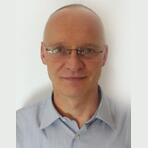Invited Speaker----Dr. Andreas Wierschem

Dr. Andreas Wierschem, Professor, Institute of Fluid Mechanics, Friedrich-Alexander University, Germany
Dr. Andreas Wierschem is a professor at the Institute of Fluid Mechanics of the Friedrich-Alexander-Universität Erlangen-Nürnberg (FAU), Germany. His research interests range from fluid mechanics (particle-laden and multiphase flows, films, flow instabilities, heat and mass transfer) to rheology (in particular narrow-gap rheometry and biorheology) and to high pressure studies (phase transitions, optical measurement techniques). He received his master in physics at Münster University, Germany, his Ph.D. at HU Berlin, Germany and his habilitation at Bayreuth University, Germany. Besides, his academic career includes stays at MCI (Innsbruck, Austria), TU München (Munich, Germany), Institut Non Linéaire de Nice (Sophia Antipolis, France) and Universidad Complutense (Madrid, Spain).
Speech Title: Incipient motion of a single sphere on regular substrates at low particle Reynolds numbers
Aims: A quantitative description of incipient motion of a single sphere at low particle Reynolds numbers.
Methods: We study the incipient motion experimentally with the help of a rotational rheometer, numerically with OpenFOAM and by modelling starting at the classic solution for a sphere at a flat plane.
Results: We show the impact of the substrate geometry on the critical Shields number over the entire range of possible angles of repose. Rolling motion is always preferred to sliding. Depending on the spacing between the substrate particles, the effective zero level of the shear flow penetrates into the substrate by approximately 8%–13% of the particle diameter. With the effective level of flow penetration being the only external parameter, we propose a model for the incipient motion at low particle Reynolds numbers. The model is an extension of Goldman's classical result for a single sphere near a plain surface taking into account the angle of repose, flow orientation with respect to substrate topography and shielding of the sphere to the shear flow. For well-exposed particles, we observed that the minimum critical Shields number for a certain angle of repose does not depend sensitively on the considered geometrical arrangement.
Conclusions: Our model is able to predict the critical Shields number as a function of the sediment bed geometry for the entire range of possible angles of repose. It is in good agreement with numerics and experiments.

